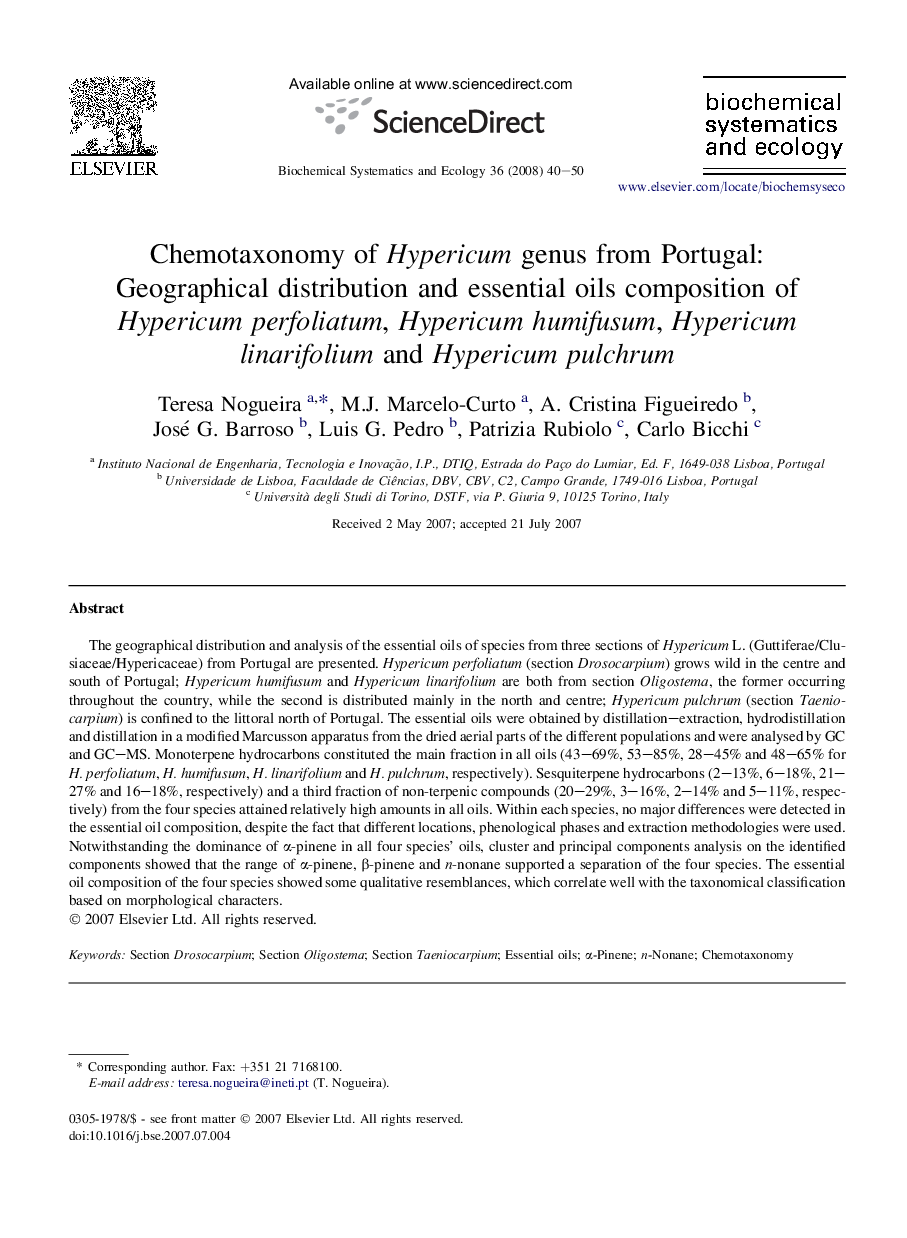| Article ID | Journal | Published Year | Pages | File Type |
|---|---|---|---|---|
| 1354533 | Biochemical Systematics and Ecology | 2008 | 11 Pages |
The geographical distribution and analysis of the essential oils of species from three sections of Hypericum L. (Guttiferae/Clusiaceae/Hypericaceae) from Portugal are presented. Hypericum perfoliatum (section Drosocarpium) grows wild in the centre and south of Portugal; Hypericum humifusum and Hypericum linarifolium are both from section Oligostema, the former occurring throughout the country, while the second is distributed mainly in the north and centre; Hypericum pulchrum (section Taeniocarpium) is confined to the littoral north of Portugal. The essential oils were obtained by distillation–extraction, hydrodistillation and distillation in a modified Marcusson apparatus from the dried aerial parts of the different populations and were analysed by GC and GC–MS. Monoterpene hydrocarbons constituted the main fraction in all oils (43–69%, 53–85%, 28–45% and 48–65% for H. perfoliatum, H. humifusum, H. linarifolium and H. pulchrum, respectively). Sesquiterpene hydrocarbons (2–13%, 6–18%, 21–27% and 16–18%, respectively) and a third fraction of non-terpenic compounds (20–29%, 3–16%, 2–14% and 5–11%, respectively) from the four species attained relatively high amounts in all oils. Within each species, no major differences were detected in the essential oil composition, despite the fact that different locations, phenological phases and extraction methodologies were used. Notwithstanding the dominance of α-pinene in all four species' oils, cluster and principal components analysis on the identified components showed that the range of α-pinene, β-pinene and n-nonane supported a separation of the four species. The essential oil composition of the four species showed some qualitative resemblances, which correlate well with the taxonomical classification based on morphological characters.
